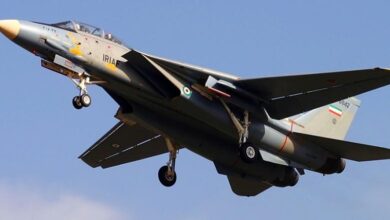The development of potentials of the Chinese Navy and aspirations to penetrating the deep waters

Prepared by Sabreen Al Ajrudi: Department of Research, Strategic Studies, and International Relations
21-03-2024

The Chinese army is among the largest 145 armies in the world, with its navy ranking first globally in 2023.
It is the second most powerful army in Asia, preceded by the Russian army, and third globally according to “Global Fire Power” website.
China relies on the blue water navy, considering it a maritime force capable of operating internationally, ensuring deterrence power, enabling the state to have diplomatic influence in international negotiations, and enhancing its economic strength through maintaining its trade exchanges.
It is worth mentioning that until recently, the Chinese navy was considered only a “green water navy” from observers’ perspective, meaning its operations did not extend beyond coastal areas.
However, the naval fleet, consisting of 340 warships established in recent times, reveals China’s desire and aspirations regarding the “blue waters.”

Dawn of a new era in Chinese maritime policy

The year 1996 marked a significant turning point in China’s maritime policy. In that year, Taiwan was
preparing for its first-ever election, and the U.S. Navy sent two naval fleets, including aircraft carriers, to secure the elections in Taiwan. At that time, China had no means to intervene through its green water navy.
Beijing had to prepare its naval force, with the People’s Liberation Army Navy purchasing destroyers from abroad, securing technology transfers, establishing shipbuilding facilities, designing warships for mass production, investing in access denial systems, and developing formidable forces capable of exploiting vulnerabilities opened by access denial weapons.
Based on this, China changed its maritime policy to what is known as “maritime denial,” relying on access denial systems. These systems include a variety of missiles, air defenses, and electronic capabilities designed to thwart enemy force and asset operations.
The most important milestones of China’s naval development are represented in five key points. In 2003, China expanded its missile inventory to deter all foreign forces posing threats to its coastal security. In 2010, the number of short-range ballistic missiles reached 1,000, while Beijing was also developing advanced DF-21C missiles with a range of 1,700 kilometers, capable of reaching distant areas in Japan and the Philippines.
In 2017, China focused on short-range and medium-range ballistic missiles capable of reaching targets on Guam Island in the western Pacific.
In 2022, the balance in the Pacific Ocean completely shifted due to China’s massive firepower.
In 2023, China was classified among the most powerful global forces possessing a vast number of warships in the world, totaling 730 maritime units, including:
2 Aircraft carriers (ranking second globally).
3 helicopter carriers (ranking third globally).
50 destroyers (second largest destroyer force).
43 frigates (largest frigate force in the world).
72 corvettes (second globally).
78 submarines making China the strongest globally in this weapon.
150 patrol ships, ranking fourth globally.
36 naval mine sweepers, ranking second globally.
Thus, patrol ships represent the largest proportion of the Chinese fleet, accounting for approximately 35%, while submarines represent 18%, and corvettes represent approximately 17%.
The potency of a navy that raises alarm in the United States

There are many indicators reflecting the increasing strength of the Chinese navy, especially in the Indo-Pacific region, including naval military exercises conducted by China with other friendly countries. One notable exercise was the joint naval exercise between the Chinese and Russian navies in July 2023 in Japan, involving more than 10 ships and 30 military aircraft. The aim was to secure strategic waterways in the Sea of Japan and enhance the capabilities of both Russian and Chinese navies to confront all challenges in Asia and the Pacific region.
In August of the same year, naval maneuvers were conducted in the Pacific Ocean, focusing on rescue operations and countering air attacks.
This Sino-Russian military cooperation in naval matters represents a real force against the United States and its allies in Asia and the West, effectively limiting their naval movements in the region.
On the other hand, the aircraft carrier “Fujian” is considered the ultimate aerial advantage for China, surpassing all aerial capabilities of the United States and its allies in the western Pacific and East Asia in favor of the Chinese People’s Liberation Army. Additionally, the Chinese aircraft carrier “Fujian” is the most advanced carrier ever compared to its counterparts, with the capability to carry a full fleet of aircraft (patrol, warning, and control aircraft).
Among the other notable points indicating the strength of the Chinese navy is its possession of two types of anti-ship ballistic missiles at sea, with the first having a range exceeding 1500 kilometers, and the second reaching nearly 4000 kilometers. These advanced capabilities have made the United States extremely concerned, especi ally since these sophisticated missile systems, supported by advanced monitoring and targeting systems, could pose a significant threat to Washington’s aircraft carriers.
Cues about further progression towards the boundaries of 2050

The Chinese navy is experiencing tremendous growth, with sources indicating that if the growth continues at this pace, the number of aircraft carriers by 2030 will reach 5 or 6 carriers.
China primarily focuses its objectives on controlling the waters of the first island chain. At the same time, China’s strength does not rely solely on the number of ships or payloads compared to the United States to achieve its goals within the first island chain.
Based on its current capabilities, any hostile actions do not pose a problem for China, as it can rely on its ground-based missiles and fighter aircraft coming from the mainland, effectively neutralizing any fleet within the first island chain.
As the Chinese areas of control increase, so do the anti-access weapons that will be able to thwart all foreign fleet operations in the region.
By 2050, China’s naval power will be at its peak, with the number of aircraft carriers reaching around 10 carriers at the same pace of current equipment. Regarding naval forces, they will equal the size and capability of the American navy with 100,000 soldiers, while also enjoying the same immunity.
On the other hand, there is a possibility that China will act more freely by choosing the boundaries of its surface ships, aircraft carriers, and amphibious capabilities. It will also be able to operate along both the Indian and Pacific Oceans and may establish numerous bases to further impose its dominance and distribute its logistical bases. This significant development will likely lead to intense naval warfare between China and the United States, with potential hotspots extending from the Persian Gulf to the Maldives and Diego Garcia, and the parallel line stretching from Djibouti to Kenya and Mozambique.





